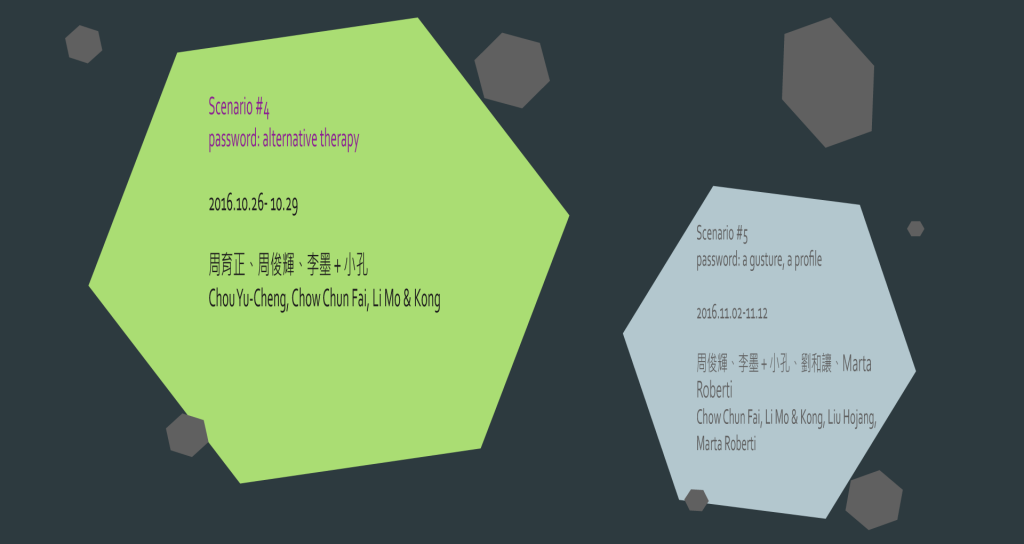For English, please scroll down.
我們最大的焦慮和病徵不就是去理解和處理屬於我們自身的當代性嗎?如果無法扣接、回答這個問題意識——何謂當代,我們豈不抹平自體於歷史洪流中的方向性和棲身之處?這個場景意圖聚焦在肖像、檔案、時代脈絡和創造性觀看的連結與關係,並藉此企圖窺看藝術家所扮演的時代性角色如何發展價值異化、易轉的可能。
藝術家要如何化作或創造新的英雄、巫師、運動家還是孫悟空,才能思辨提出當代的救贖想像,作為一種啟發性的典範?或是嘗試對某長期潛在的集體性麻痺徵候,給予新的刺激?我們對日常裡以各色名目混成惡臭的結構性暴力輕易失去抵抗與反省回應,而此普遍沈默是一種條件性的結果、還是惰性挪借為生存法則一樣的生命驅力?當這個時代的藝術一方面被Hito Steyerl批判諷刺成「越來越被標示為一種墮落無根、無感的大都會城市菁英所從事的活動」之際(1),我們事實上也關注到藝術場景裡收納了更多未知、未明的、跨度的想像力與其實踐方案。這種開放性讓藝術進入一種流動性的社會對話場域作為一種匯率浮動萬變的交換貨幣,本身的狀態就被「當代性」這個註定尚未被完成定義的條件給挑戰;也因此,我們不斷對「藝術」打上新的問號,使其逼視時代。
在這樣的認識下,藝術家的時代參與嫁接在什麼樣的實踐方案裡呢?《肖像擺》從展名開始即暗示了一種從經典美學範疇裡再思這個題目的方法:將「肖像」的概念作為一種指認辨識主體的路徑、描繪捕捉內外關係的能力並對於未見之物施以顯像技巧,或是對於各種再現的審問,皆為觀念、科技、形式、演練實踐與知識生產的一種表述。
周育正、周俊輝、李墨+小孔各自在其特殊的在地語境內梳爬出一種從個人穿透到社會、到時代的一種美學取徑:他們望向那些亟待被勾勒出面容的對象、望向家鄉,對於指辨、顯像、再現的可能賦予擴充翻轉、延展敘事的政治性力量,對於時代性產物般的人物和角色進行深刻的反思。他們所關注的,恰是一種時代框架下人們的內在處境,並以其藝術手段去對其中涉及的環境結構進行批判。周育正對於勞動結構和資本社會的省思、周俊輝對於媒體與政治的敏銳體察、李墨與小孔對於國家現代化進程裡的社會組織樣貌紛紛以不同的方法剖析了矛準時代精神的關鍵時刻,而讓這些人物不論是來自現在、過去或是虛構,在轉身對我們展示其表情和言說力量之時,亦讓我們所處的「當代」猶歷第二次的春天,使我們在觀念性形象的塑造動態裡,見證或參與各種價值系統再生產的可能並對時代性的觀看意義進行添補。
(1) Steyerl, Hito. If You Don’t Have Bread, Eat Art!: Contemporary Art and Derivative Fascisms, e-flux Journal #76, October 2016.
周育正
周育正關注在既有機制中生產另類的操作和思考邏輯,透過非典型合作的模式開發新型態的價値,並同時彰顯其相關之內在運作問題。近來的藝術計畫轉向於對生命的探討,將生命、藝術史、自傳等視為文本以探究現代性的翻轉和演繹工程,其處理美學和社會之雙面操作輕巧地展開在各種雕塑、繪畫、文學、劇場等多樣媒材空間裡。目前工作與生活於台北。
周俊輝
在周俊輝的創作之中往往可見其借助時空之差,以既隱晦卻深沈的政治寓意,賦予挪用的文本多重指涉。其作品往往跳出線性時間的直白描述,藉保有距離的觀看,以電影場景繪畫寄語朦朧及曖昧的側寫狀態,將對社會的共鳴及呈象現實宿命的糾結關係,以一股混入的「惡搞」氣質,從中笑謔世情謬事,作為一則則對於時下的即刻回應。目前工作與生活於香港。
李墨+小孔
行動作為生產模式,是為書寫建築工作室的建築師李墨和小孔所致力在思考與探索介於理論思辨與建造技藝之間的可能。透過公共性計劃促進社群對於居所空間進行關注、思考、對話與實驗,以樹立新價值導向的邊緣方法以及建構新生產模式的在地投放,輸出具書寫意涵的當代城市設計。目前工作與生活於北京。
Is it not our greatest anxiety to comprehend and work through the “contemporaneity” of our own time? If we fail to recognize the contemporary and its problematic implications, we also come to lose our orientation and habitation of history’s course. This scenario attempts to debate the possibility of value alteration and transformation from the role of artist by focusing on the relationships between portrait, archive, time, and creative seeing.
How can artists create and even play new heroes such as witches, campaigners, or the Monkey King, to craft an inspiring figure – an imaginary guardian for our contemporary society to speculate ways to go beyond our time? How can artists provide new stimulations to cure our long-term collective paralysis when we easily ignore or tolerate all sorts of structural violence without resistance or reflection? Is such widespread silence a conditional consequence or a survival tendency that runs parallel to laziness? While art of our age is “increasingly labeled as a decadent, rootless, out-of-touch, cosmopolitan urban elite activity” as Hito Steyerl put it [1], we also realize that the art scene actually accommodates the wild possibility for yet to-be explored trans-disciplinary creativity. This open phenomenon allows art as a floating currency in a fluid social field to be challenged by the incomplete definition and condition of the “contemporaneity.” As a result, art is put into endless questions, confronting time.
With this understanding, we couldn’t help but further inquire what kinds of practices artists can formulate to engage the audience of this distinct era. Portrait Portrait suggests a pathway to reconsider this question from a classical aesthetic sphere. The reconceptualization of “portrait” is hereby regarded as the means to identify subjectivity, the capacity to capture the correspondence from the inner world to the outer world, performing figuration for the invisible, while investigating the question of representation. It is therefore a narrative to transcribe ideas, technology, form, method, and knowledge production.
Chou Yu-Cheng, Chow Chun Fai, Li Mo & Kong have taken peculiar aesthetic trajectories in each specific local context to bridge a connection between the individual and society over time. They gaze upon their homeland and those faces waiting for recognition, generating profound reflections on the characters, both fictional or real, in their own times. Their gestures enlarge and transform methods of identification, figuration and representation, and further extend the political power of narration. The psychological aspect of the human condition belonging to a specific era is exactly what concerns them, and they employ their artistic approach to criticize the social systems involved as the contextual backdrop. Chou’s re-appropriation on the relation between labor structure in a capitalist society, Chow’s sensitive observation to manipulate the relation between media and politics, Li Mo and Kong’s analysis on the nation-state’s social structures through the modernization process all shed light to the critical moment of the era. These characters, whether past, present, or even fictional, can come alive to demonstrate their speech acts and enact the time once again. We, on the other hand, as the new spectators, either come to witness or participate in the reproduction of values with new ways of contemporary awareness.
[1] Steyerl, Hito. If You Don’t Have Bread, Eat Art!: Contemporary Art and Derivative Fascisms, e-flux Journal #76, October 2016.
CHOU Yu-Cheng
CHOU Yu-Cheng creates alternative modes of operation and contemplation within existing mechanisms to expose implicit problems and create new sets of exchange value through unconventional collaborative models. His recent projects uses life experience, art history and biography as his subject to create an interplay between aesthetics and society to investigate the transformation and interpretation of modernity through a variety of media including sculpture, painting, literature and theatre. Chou lives and works in Taipei.
CHOW Chun Fai
In the temporal gap between the production and reception, CHOW Chun Fai’s nonlinear narratives are imbued with hidden yet intense political expression. His often humorous paintings drawn from cinema represent the vague and ambiguous social conditions of class and Status as a dilemma in reality. Chow lives and works in Hong Kong.
LI Mo & KONG
LI Mo & KONG studies the connection between theoretical speculation and architectural techniques. The studio explores new horizons for urban design and its related art through “Calligraphic” interpretations. Their public projects, brings the community attention, thinking, conversations and experiments to build up the margin method which leads a new set of values formed within and the local launch of a new production pattern constructed at a locale. Calligraphy Architecture Studio is based in Beijing.




